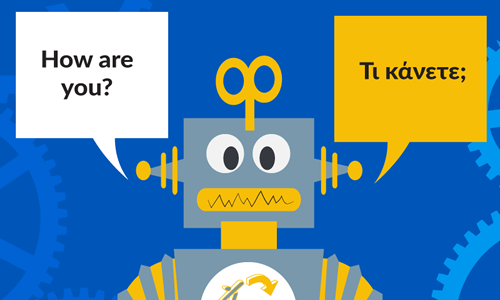Recently, the people’s lives are becoming everyday faster and people needs results each day in quicker way and in a shorter time. This is why many experts are constantly researching about how to improve the robotic and machine translation systems. In this article you will find a quick review about the possibilities that we are waiting to see in the future of the Machine Translations.

The machine translations: why are necessary
Everybody knows that the world is each day more connected and mixed, so it is needed that the language is not anymore to be a problem or an obstacle between people. The people visiting foreign countries do not often have the possibility to hire an interpreter for neither their travels nor the time to learn all the language of the place they are visiting.
The future of the machine translations is waiting
Today it is something rare to see a properly working translator program that does not appear with misspellings, wrong composition of sentences and expressions with literal translations which do not transmit the right, proper, original metaphoric meaning of the word.
Issues like these are what the machine translations need to be fixed for getting into their future. And these issues are being solved by improving the general intelligence and the ability of the machines for learning from the expressions of the humans.
The machine translations: what do they need
To get the ultimate machine translation, what we need is to develop and train an Artificial Intelligence by letting it recognize the right translations with the past of the time. There are so many languages, all of them are different, all of them are complicated, and some of them make no sense without their bond with the culture they are coming from.
What to consider when translating into complicated languages
If I ask you “What is the most complicated language you can think about?” you could say “the Chinese Language” or some other. Actually, this is not that complex regarding to the composition of the sentences, the verbal tenses and similar aspects, complicated language in these mentioned aspects is the Spanish language.
When you translate English and Spanish, it is hard for the Artificial Intelligences to know if the “you” word and aimed expressions are must be formal (“usted”) or informal (“tú”). In this case, for a machine, it is needed for the system to analyze the context and the structure of the entire paragraph for identifying the formality of it.
What to consider when translating from complicated languages
The whole structure of the English language looks like it is quite simple close to other languages. When translating from complicated languages into the English, it comes to be a difficult task to find exactly the words and the sentences to translate the expressions, especially when it is a language that is full of metaphors and figurative expressions with a meaning that is not literal.
The future of the machine translations is getting close
Every day, the machine translations are getting these issues resolved step by step, the AIs as bots are reaching the possibility to give human-like responses to the conversations and this means that the same fate is coming for the translations made by Artificial Intelligences.
The Future of the machine translation is slashing its way through the time to world, and it is expecting to see the improvements that are close to come, how will the scientist reach those capacities on their new software and machines? We are just about to see it, future for the machine translations that comes.